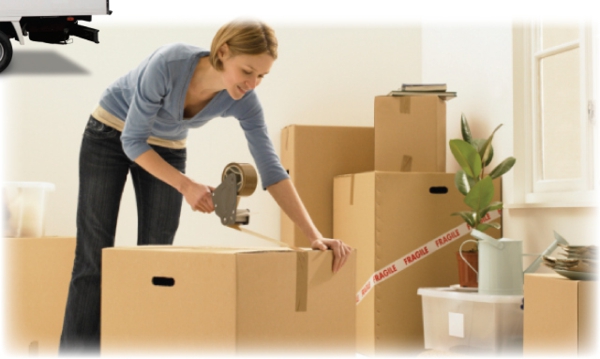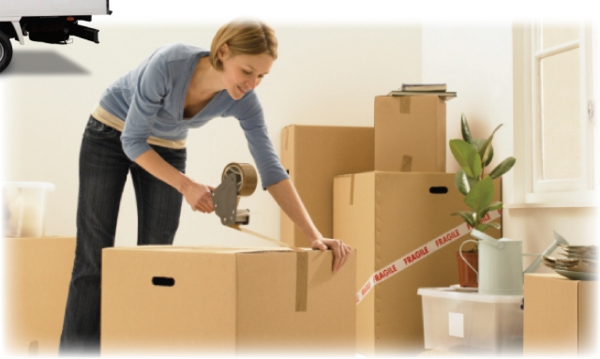Home Improvement
How To Move Safely And Avoid Injuries

Even if your move has been long planned and you’ve been looking forward to it, the act of moving can still be stressful, but along with the emotional ups and downs, there’s also your body to consider. Although you may be physically fit and strong, don’t overestimate your body’s capabilities and endurance. This can lead to exactly what you don’t want to happen, minor or even severe injuries as a result. So here are some tips for safe, injury-free moving:
Rent or Borrow the Right Equipment
Using the right equipment when moving can make a world of difference in regards to preventing back strain and a host of other injuries, especially when it comes to moving the larger, heavier items. It’s always a good idea to have a dolly or two on hand so that the heaviest boxes can be placed on it either individually or several at a time and moved a lot more easily. You should also have straps to help secure the larger boxes to the dolly so that you don’t have to worry they’ll fall off while you are trying to transport them.

50 Pound Rule
One of the sure things about packing is that you’re always tempted to add a little extra to a box; you know, squeeze in a few more items than you originally planned on. Well, that’s not always a good idea, because when you have to carry those boxes out of the house, even an additional 10 pounds can feel like a whole lot more. That’s where the 50 pound rule comes in.
Basically, just be sure that all the boxes you pack up weigh 50 pounds or less. If it seems like a box might be too heavy, test it by trying to lift it. If it feels like trying to move a ton of bricks, then don’t risk hurting yourself by trying to carry it. Also, take into consideration exactly where you have to carry it to and the obstacles you face along the way; like steep stairs or a slick sidewalk.
Here’s another hint for you too, the correct way to life anything is to lift with your lower body, especially your knees. Simply bending over to pick something up can cause a rupture.
Property Inspection
Sometime before the big day is upon you, take the time for a quick tour of the area around your home and also your new home. Make a mental note of the closest spot where the moving truck can park.
Also, examine the front of your home and check if you have any uneven pieces of sidewalk or walkway areas which can cause the movers to trip and fall.
Take a good look around and make certain there are no other dangers lurking, such as posts, poles or tree branches that can catch someone by surprise. If you can’t remove the obstacle then be sure and warn the movers about it before they get started. You don’t need any unpleasant surprises intruding on your move.
Moving Day
1. Organize your space — Make sure that the high traffic areas of your home are clear, so that there will be nothing to block the mover’s way or trip them up.
2. Assignments — If you are dealing with professional movers then this won’t be a problem, however, if you are being assisted by friends or family members, then assign everyone a certain task to perform so that they don’t get in each others way. This will help avoid arguments and confusion.
3. Check clothing — If you’re using friends or family members to help you move, then give everyone a quick once over and see if the clothing and footwear they have on is appropriate for the task at hand. For example: tackling the chore of moving in the snow in high heels isn’t a good idea. You need lots of traction. And make sure that everyone will be warm enough if it is cold outside.
4. Keep children and pets out of the way — Ideally both children and pets should be away from the house altogether on moving day, but that isn’t always practical. So take extra care to keep an eye on your children if they are going to be present for their safety and the safety of others. If your pets must remain on the premises then lock them in an empty room that you are sure no one will need to enter. The noise and confusion is guaranteed to rattle them.
5. Food and drinks — Keep lots of food and drinks available for snacking and taking breaks. If the moving is taking all morning, then provide lunch as a way of saying thank you to those who are helping you out.
6. First Aid — Keep a first aid kit nearby, and make certain it contains plenty of band aids, disinfectant, aspirin, gauze, etc. If you are lucky you won’t have any serious accidents, but sometimes even the smallest of injuries can require treatment.
Follow these tips and they should take you safely through your moving experience and on to a new adventure.
This article written on behalf of Premier Movers, your favorite New Jersey movers. Premier are considered one of the top and office moving companies in NJ and around the region.
-

 Tech11 years ago
Tech11 years agoCreating An e-Commerce Website
-

 Tech11 years ago
Tech11 years agoDesign Template Guidelines For Mobile Apps
-

 Business6 years ago
Business6 years agoWhat Is AdsSupply? A Comprehensive Review
-

 Business10 years ago
Business10 years agoThe Key Types Of Brochure Printing Services
-

 Tech8 years ago
Tech8 years agoWhen To Send Your Bulk Messages?
-

 Tech5 years ago
Tech5 years ago5 Link Building Strategies You Can Apply For Local SEO
-

 Law5 years ago
Law5 years agoHow Can A Divorce Lawyer Help You Get Through Divorce?
-

 Home Improvement6 years ago
Home Improvement6 years agoHоw tо Kеер Antѕ Out оf Yоur Kitсhеn































